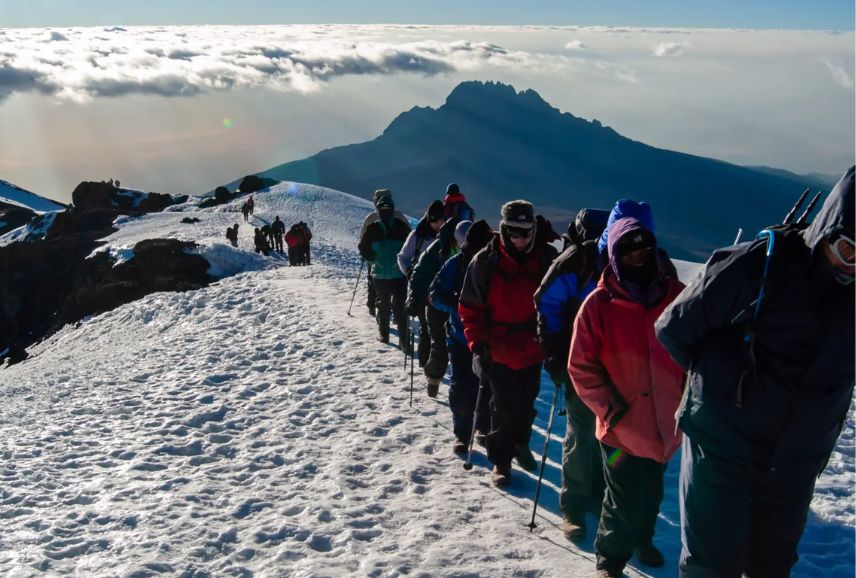Shira Route
Similar to Lemosho, approaches from west, remote, less-frequented, beautiful heath section, very scenic with southern traverse, camping, difficult route but excellent for acclimatisation.
Details
Similar to Lemosho, approaches from west, remote, less-frequented, beautiful heath section, very scenic with southern traverse, camping, difficult route but excellent for acclimatisation.
Around Londorossi Village and the national park gate is a great location to see the striking black and white colobus monkeys. The first part of the trail goes through the pine plantation and agricultural land growing maize, potatoes, carrots, cabbages, peas and onions.
At 2450 m the natural montane forest begins. The forest is thick with vegetation and climbers such as the Black-Eyed SusanThumbergia alata and the white flowers and fluffy seeded heads of old man’s beard Clematis bracliat.
At 2600 m (8530 ft) the heather zone begins.
The large orange flowers of Gladioli natalensis and pink dangling flowers of Dierama pendula can be seen. Flying between the shrubs is the common robin chat.
By 3000 m (9843 ft) the conditions are so cold and dry that the number of plant types has reduced significantly, leaving the heathers and Adenocarpus mannii as the main species.
The route heads across the sparsely vegetated Shira Plateau to Shira Cathedral. There are numerous large animals using the Shira Plateau but they are seldom seen. The eland is the most common to be spotted. Fur-filled droppings lying by the path show that leopards are also visiting the plateau.
Shira Hut Barranco Cave 3900 m (12,800)
Climbing from Shira Hut towards Lava Tower the vegetation more and more sparse. The rocks here have some moss and lichen hanging from them- proof that this area is often washed by moist clouds sweeping up from the forest zone. Descending from the plateau into the Barranco Valley the vegetation returns and giant lobelias and senecios are abundant.
The first feature today is the Barranco Wall that dominates the view from the campsite. It was formed 100,000 years ago when a huge landslide came down from the summit creating the steep sided Barranco Valley and the western breach of the Kibo Crater.
After the Barranco Wall the route undulates through a number of valleys with good examples of giant Senecios and the yellow spined thistle, Carduus Keniensis. The final valley is Karanga and, having a good water source, it is well vegetated with plants from the moorland zone.
On the way to Uhuru Peak there are very few plants, mainly loose scree and boulders. The terrain is very high, dry and cold, which is unsuitable for most plants and animals. The route to Uhuru Peak climbs the steep side of Kibo, Kilimanjaro’s youngest volcano, to Stella Point passing the remains of the Ratzel Glacier – which was the route taken for Hanmeyer’s first ascent.
From Barafu Hut to Mweka Forest there is an interesting return to life; empty rocky landscapes become dotted with plants which get larger and larger and by Mweka Forest the heather zone has been reached.
The return takes 1-2 days and we will cover the same route that we took for the ascent. Because we are coming down and have gravity on our side, we can afford to take a few breaks to check out the local flora and fauna.

Write Your Review